Experiencing the New Sushi by Scratch in Healdsburg
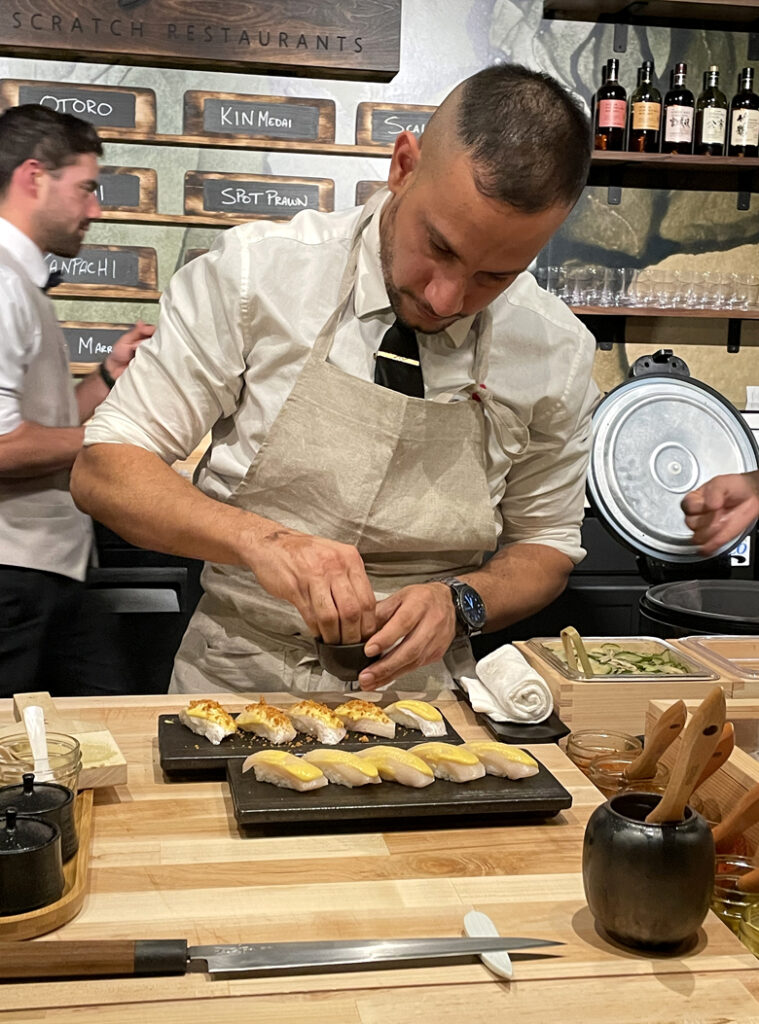
Hidden behind a door in what was once a private dining room at The Matheson in downtown Healdsburg sits a restaurant within a restaurant.
It is all of 10 seats, situated around a u-shaped sushi bar, behind which three chefs slice, form, dollop, and blow-torch seafood into precious morsels of nigiri.
We’ve all had sushi that’s been decimated by cream cheese, mayonnaise, and gloppy sweet sauces. Sushi by Scratch is not that, even if the pristine fish does get finished with what at first may seem unlikely adornments. Instead, the effect here is far more finessed.
Opened in December, this is the first location of the reservation-only, omakase restaurant that started in Los Angeles in 2017 and has quickly spread to include outposts around the country, as well as in Montreal. Chef Philip Frankland Lee, who competed on “Top Chef” and his wife, Pastry Chef Margarita Kallas-Lee, founded the restaurant. A favorite of a bevy of celebrities, it held a Michelin star in 2021 and 2022.
I had a chance to try the experience last week, when I was invited in as a guest of Sushi by Scratch.
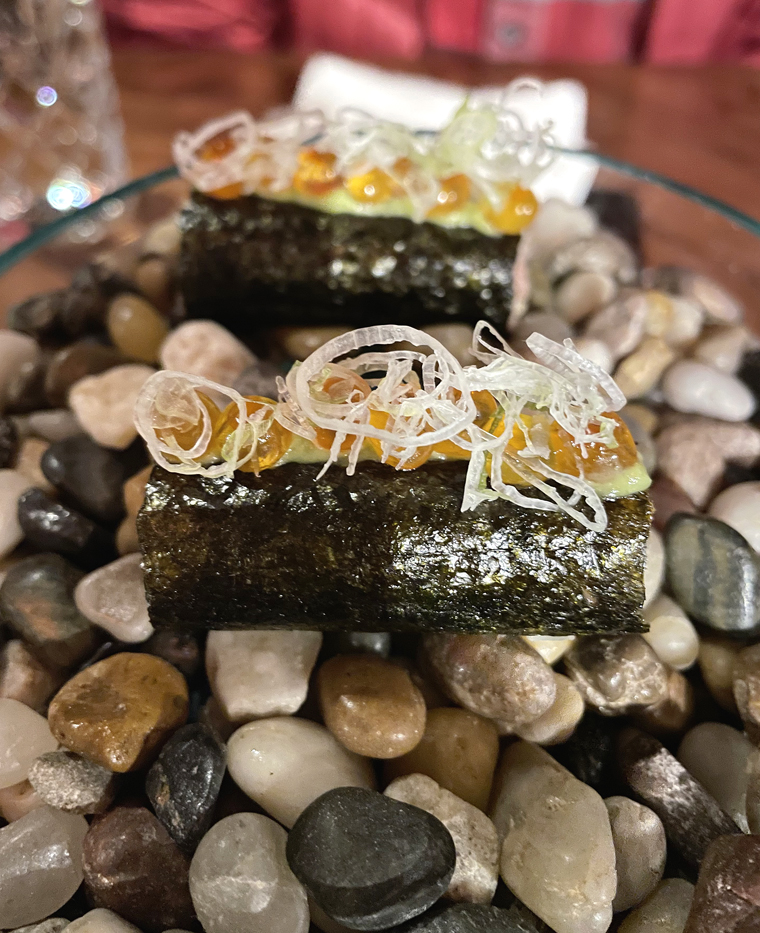
Dinner is 17 courses of nigiri at $185 per person. A word to the wise when booking: You will note that the reservation invites you to arrive 30 minutes before your scheduled reservation for a complimentary welcome cocktail. You might be tempted to blow this off if you’re not interested in a cocktail or don’t want to be bothered with arriving early. This would be a major mistake.
That’s because not only is a cocktail in store then, but also two noshes highly worth enjoying. Two couples who had booked a 6:15 p.m. reservation like us showed up exactly on the dot, and missed out.
When you do arrive half an hour early, you are escorted outside to a covered back patio, where two tables are set up beside an sculptural fountain.
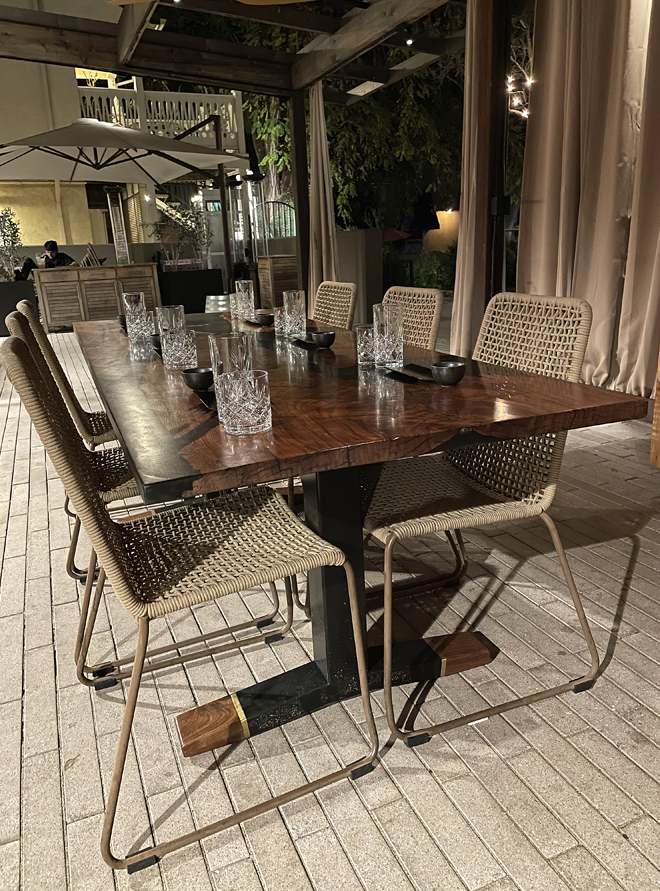
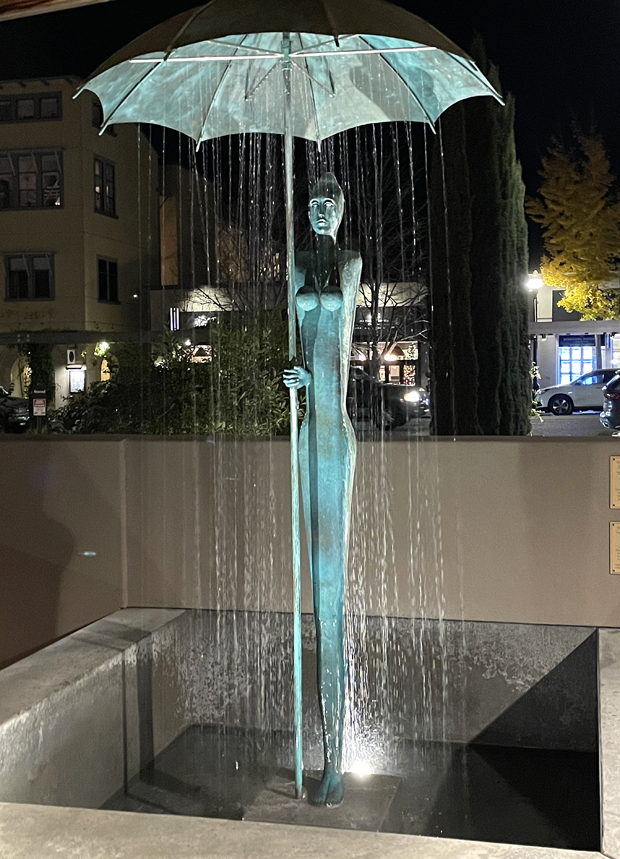
That’s where you’ll enjoy a porcelain tea cup filled with a cocktail of sake, whisky, yuzu, and ginger that’s as bracing as a palate cleanser.
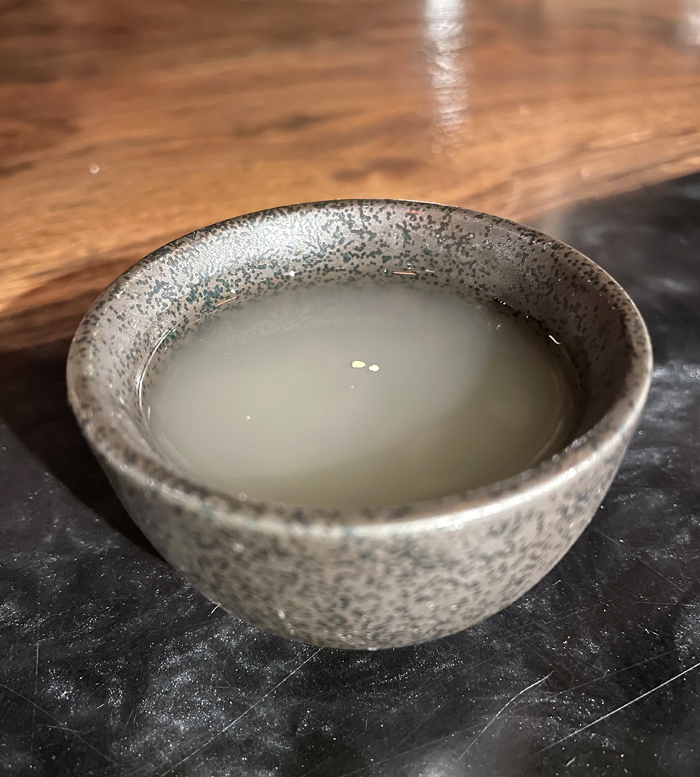
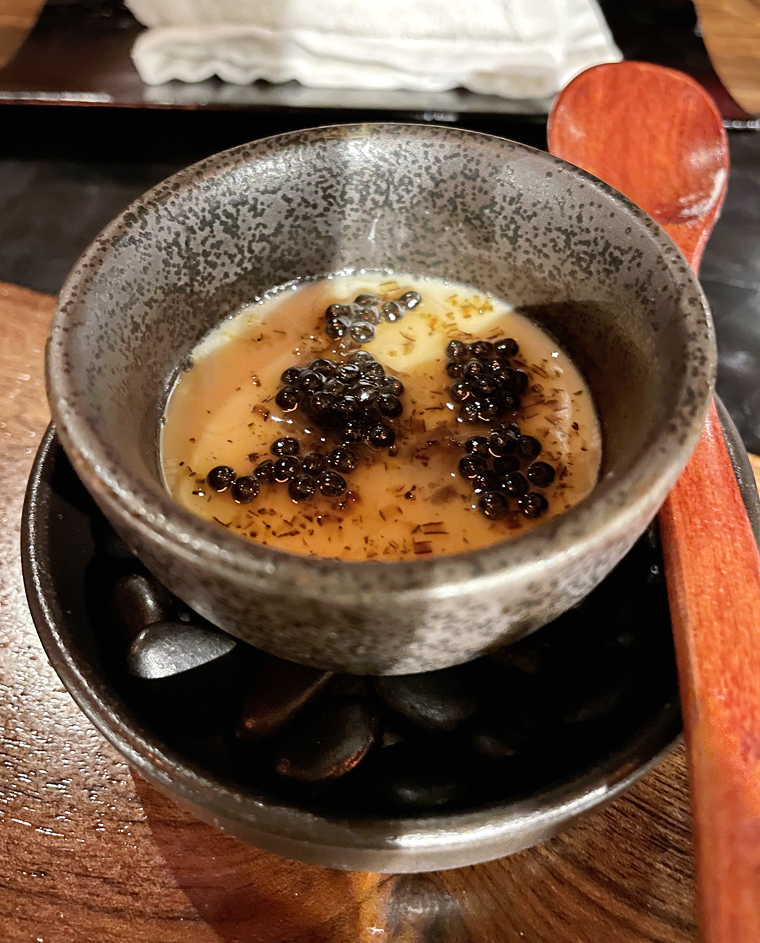
It’s also where you’ll receive those two noshes: First, a tiny “cannoli” of crisp nori snuggling Spanish bluefin tuna tail tartare with avocado mousse and ikura. It’s a one-bite sensation of crunchiness, brininess, and umami. Second, chawanmushi made with shiro dashi, brown butter-sauteed maitakes, negi (Japanese green onion), and a spoonful of caviar (if you want to level it up). The custard is warm, jiggly soft, and deliciously savory.
A server knocks on a sliding door, which opens, and everyone is escorted inside to the compact sushi bar. There, you’ll find your seat easily because your first name is written in chalk at your setting.
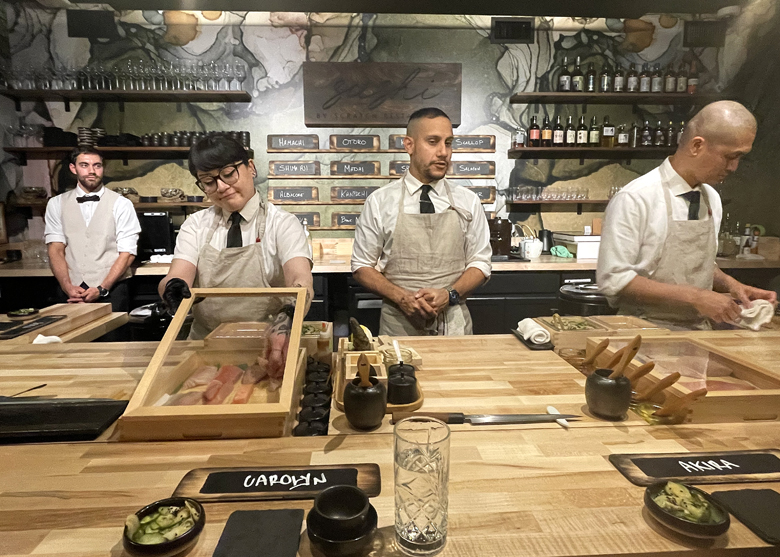
Chef de Cuisine Willer Larreal Perez, who previously headed the Sushi by Scratch in Miami and Los Angeles, stands at the center, flanked by two other chefs and a beverage server. Behind him are chalkboard signs identifying the proteins that will make up your meal.
Of Venezuelan heritage, Perez tell us how he became passionate about sushi: “When I was 12, I tried a California roll for the first time, and I was never the same after that.” Asked how he’s adjusted to sleepy Healdsburg after the hustle-bustle of Los Angeles and Miami, he says with a smile, “I love it. The other day, someone stopped me on the street to say ‘hello’ and ask how I was. My own family doesn’t even do that.”
You get it. You are not sitting before a staid, serious, ultra traditional chef, but one who encourages questions and banter, which makes for a lively time.

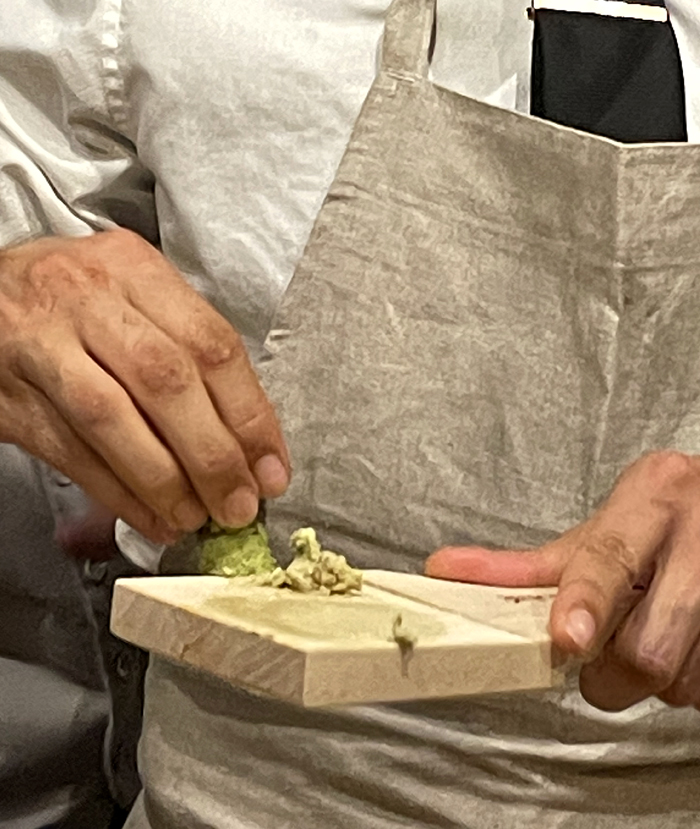
As is customary, you’re given a warm towel for your hands, which you will use throughout the meal. That’s because you’re given no chopsticks or other utensils. You eat everything with your fingers, including the dish of pickled ginger hiding slivers of pickled cucumbers and pickled shiitakes, too.
If you opt for a sake pairing or even a glass, it will be poured to overflow so that the excess in the cup cascades into the square masu it sits in.
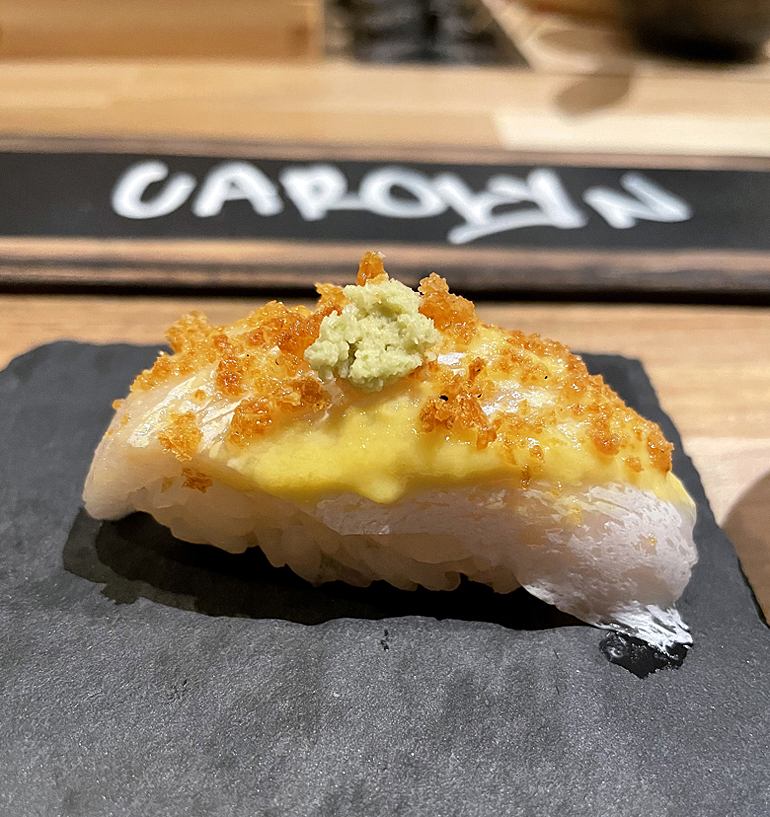
The first nigiri sets the stage for the push-the-envelope creations to come. It’s hamachi from Japan, mild and buttery, that gets an unlikely garnish of house-made corn pudding and toasted sourdough crumbs from sister restaurant, the Michelin-starred Pasta Bar. A drizzle of 7-year-old fermented soy sauce completes this beguiling nigiri that is sweet and savory and delightfully crispy here and there.
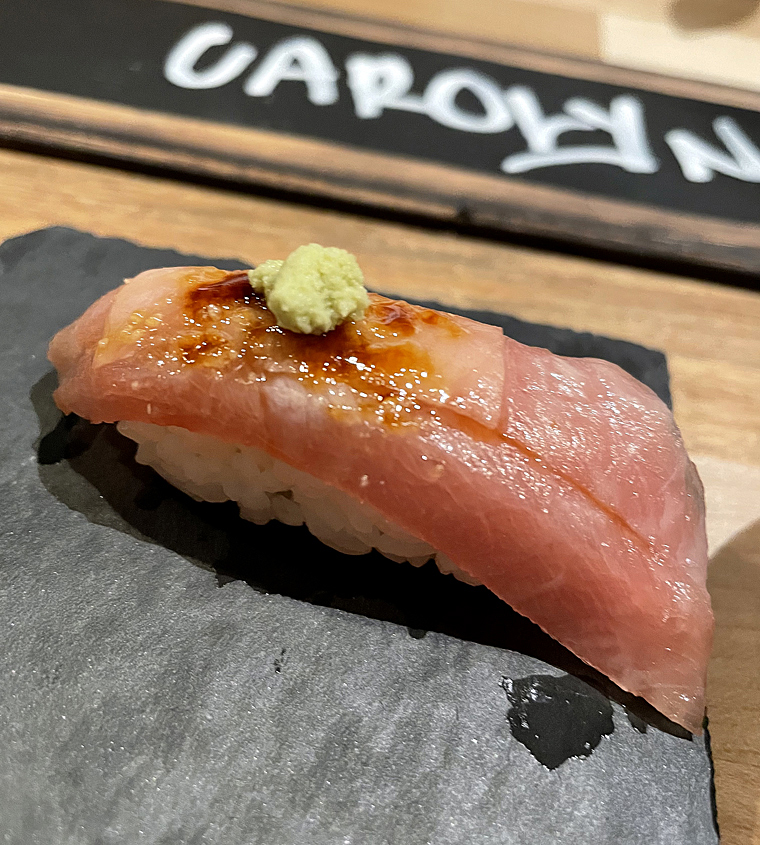
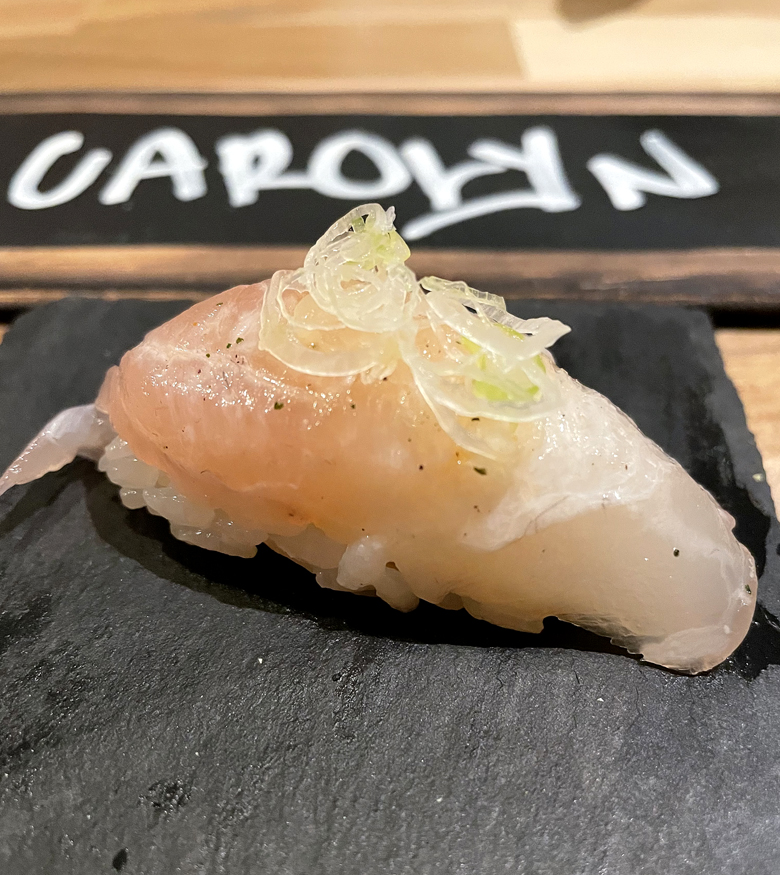
Up next is bluefin tuna belly or otoro, its fatty richness cut by the zing of pink pineapple and a sprinkle of beet sugar that’s lightly torched. That’s followed by kinmedai with a touch of salt, miso gel, beet sugar, and fresh lime zest. It’s smoky tasting with the zest really making it pop.
A slice of sea bream gets dressed with soy sauce, ponzu, and fire-roasted poblano that’s fermented, then grated over to lend a grassy, peppery note.
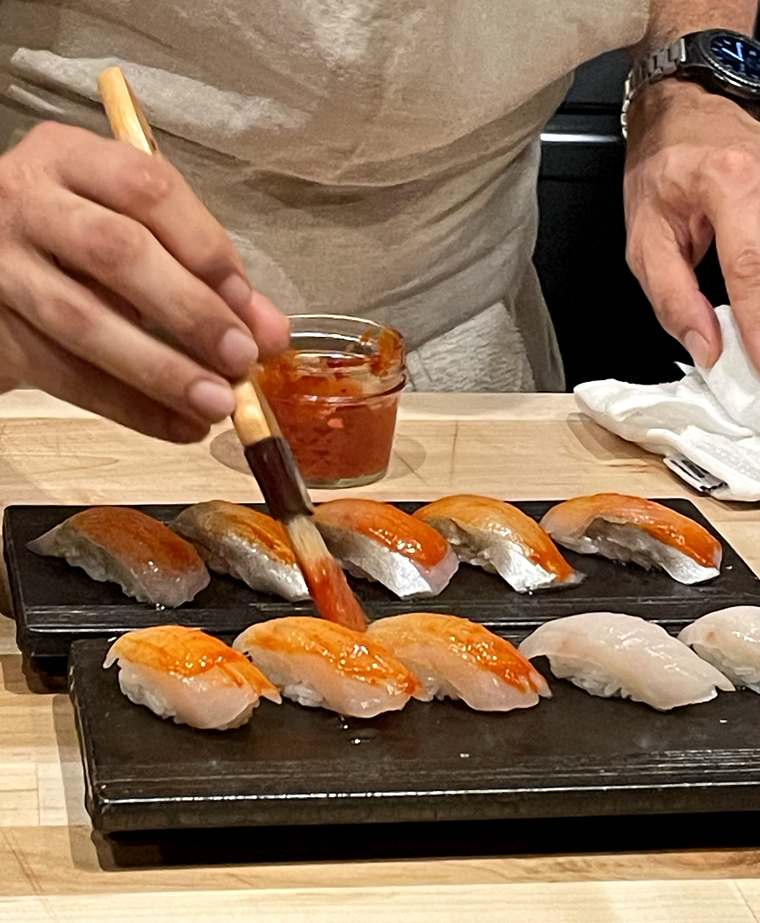
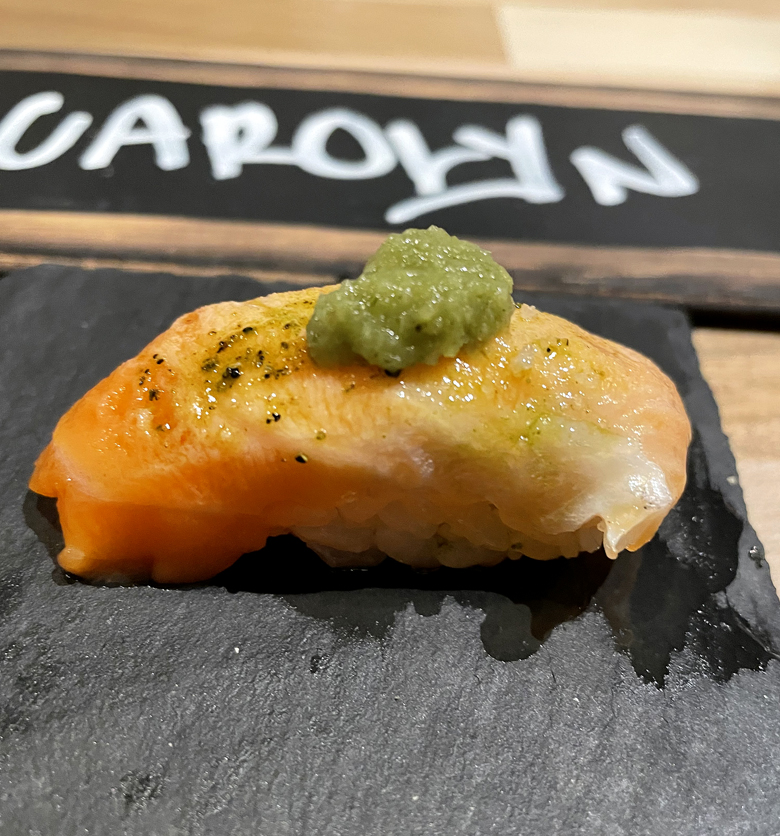
For real heat, sweet tasting shima aji gets emboldened with Fresno peppers for a burst of fruity heat that will jolt the palate. Even so, it’s not overwhelming. It’s like a flash, then boom, it’s gone, leaving your taste buds still coated with the clean yet buttery taste of the fish.
As Perez explains, “Everything is always built around the fish. It is always the most important ingredient. We just like to take the scenic route, not a straight shot.”
Farm-raised Japanese sea bream is garnished with chili sesame ponzu and shaved scallions that add a sweet yet slightly sharp brightness.
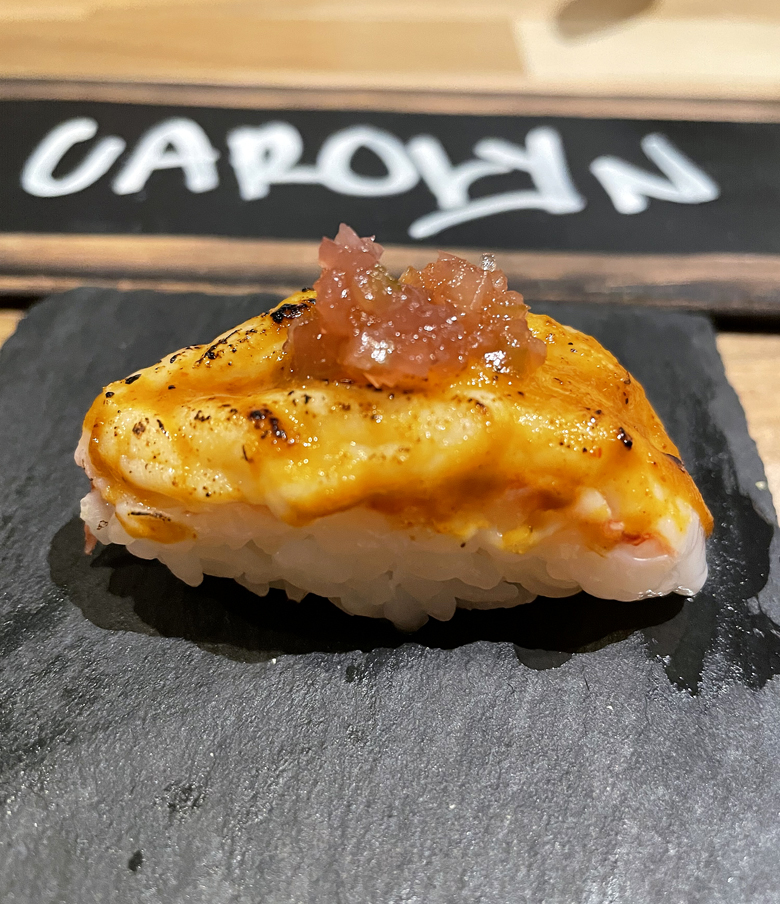
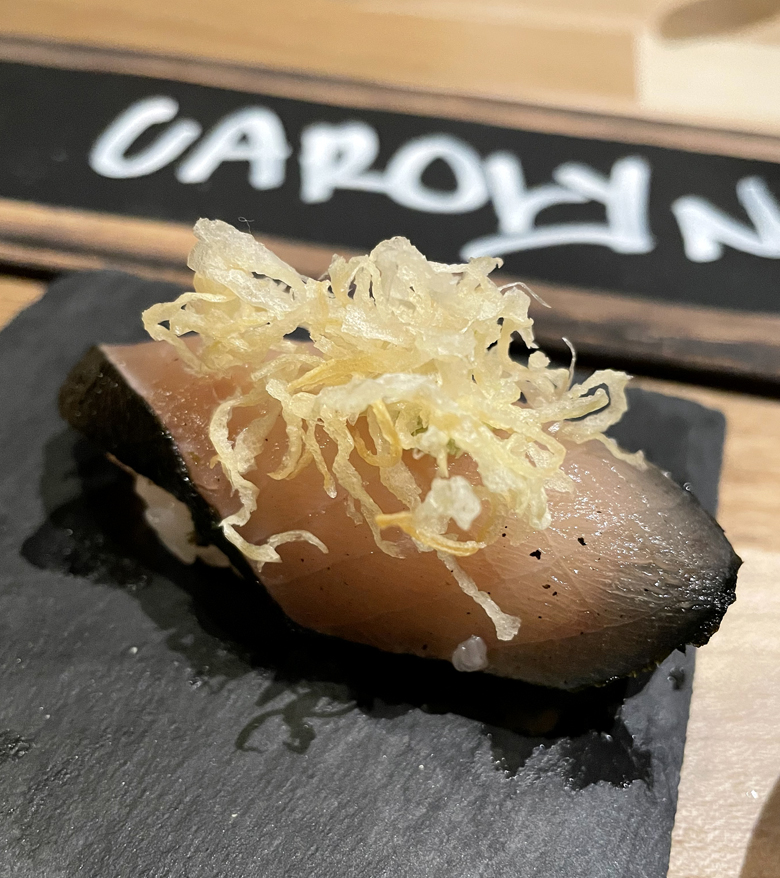
Ebi is married with pickled sansho pepper, miso, ponzu, Thai relish, then blow torched briefly to develop smokiness. It’s big, bold flavor in one bite that’s reminiscent of spicy Southern shrimp.
King salmon, so rich that its natural oil coats your mouth, gets a drizzle of Greek olive oil, soy sauce, and pickled wasabi stems that are crunchy, floral, and peppery.
Garlic-rubbed Canadian albacore sports a dark edge all around from being wrapped in seaweed for 7 days, before being roasted over fire, and presented with a shower of crispy, thin onion rings. The treatment adds much more interest to this usually very mild fish.
Kanpachi is finished simply with soy, ponzu, and more pickled wasabi to let its natural sweet, oceanic flavor shine through.
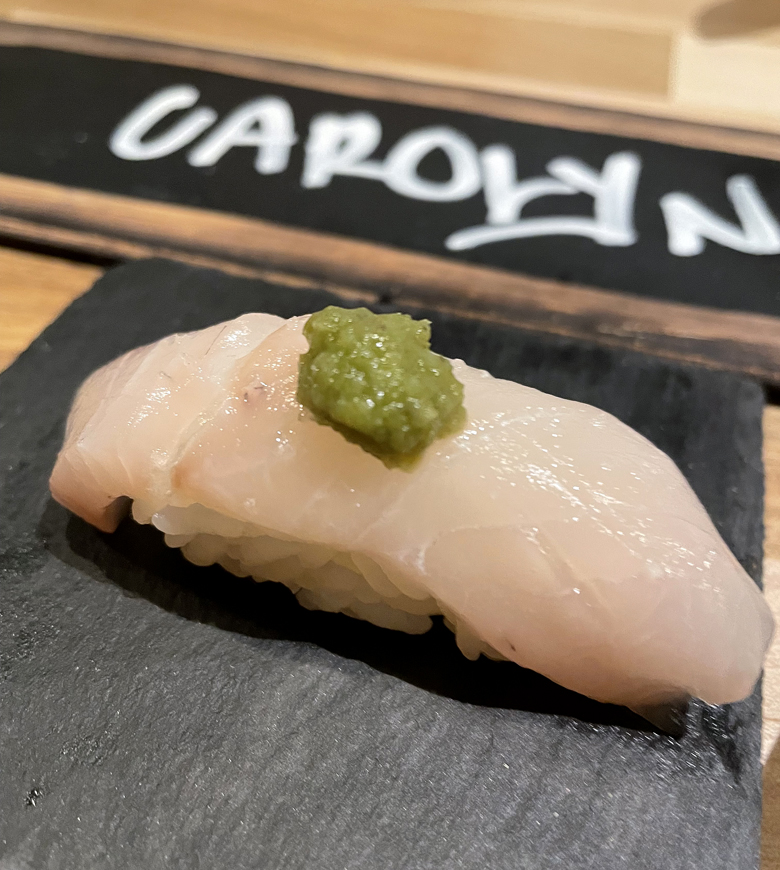
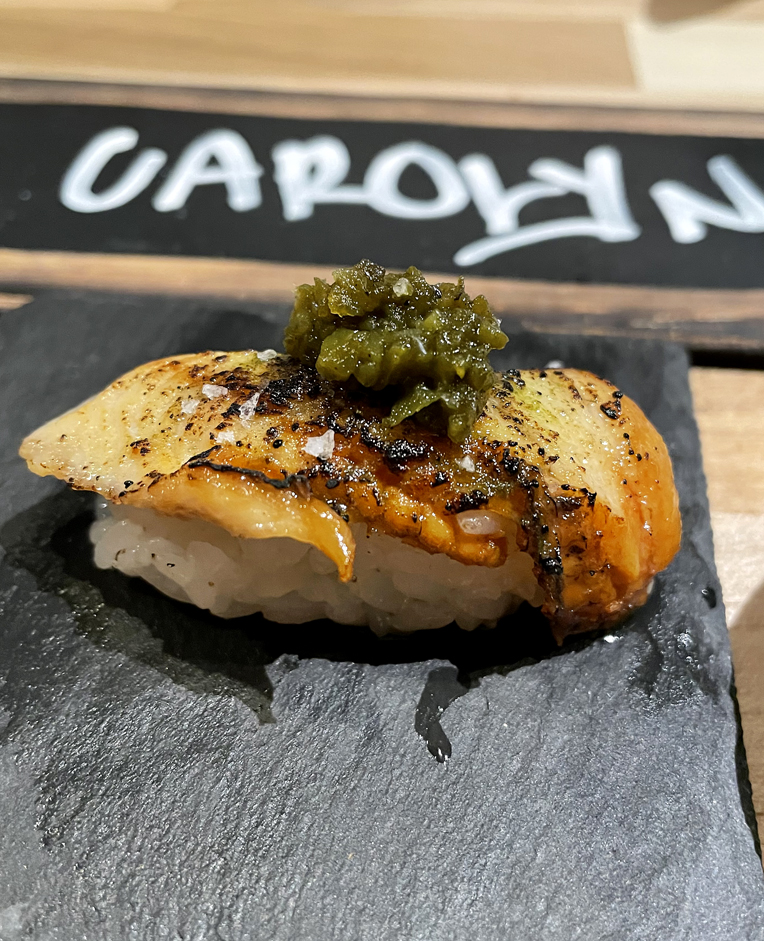
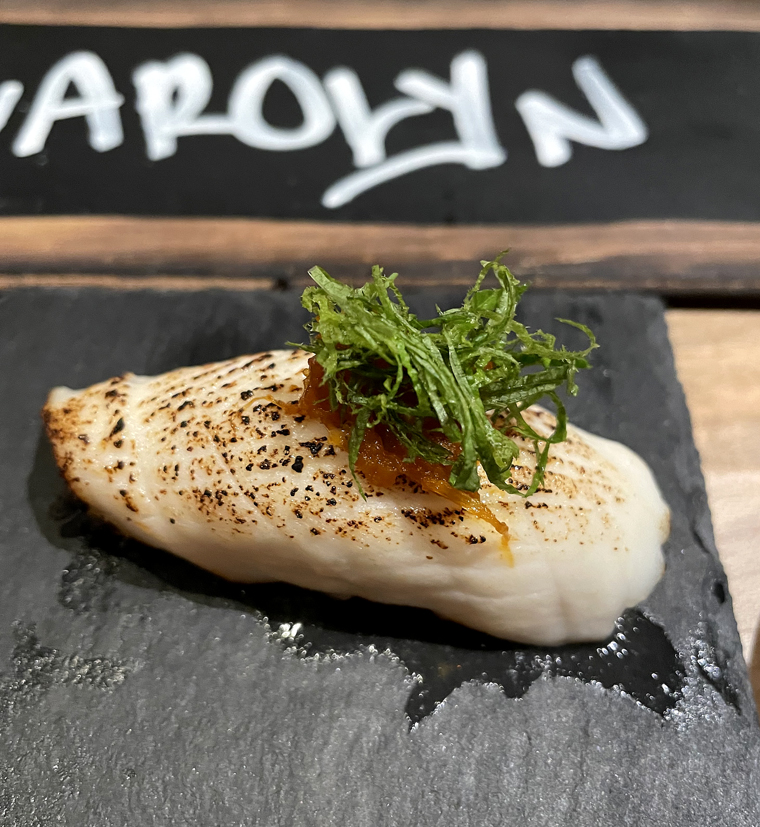
Bluefin makes yet another appearance. This time it’s the very lean top loin that’s been air-dried for 6 days, turning it a deep red, before being served with soy and freshly grated Japanese wasabi. The technique intensifies the fish’s pungent taste or as Perez describes, “It’s tuna on steroids.”
The next nigiri is a nod to Perez’s love for Korean barbecue. The butterfish is meant to mimic that cuisine’s mouthwatering smokiness and fermented heat with its crown of kimchi on top.
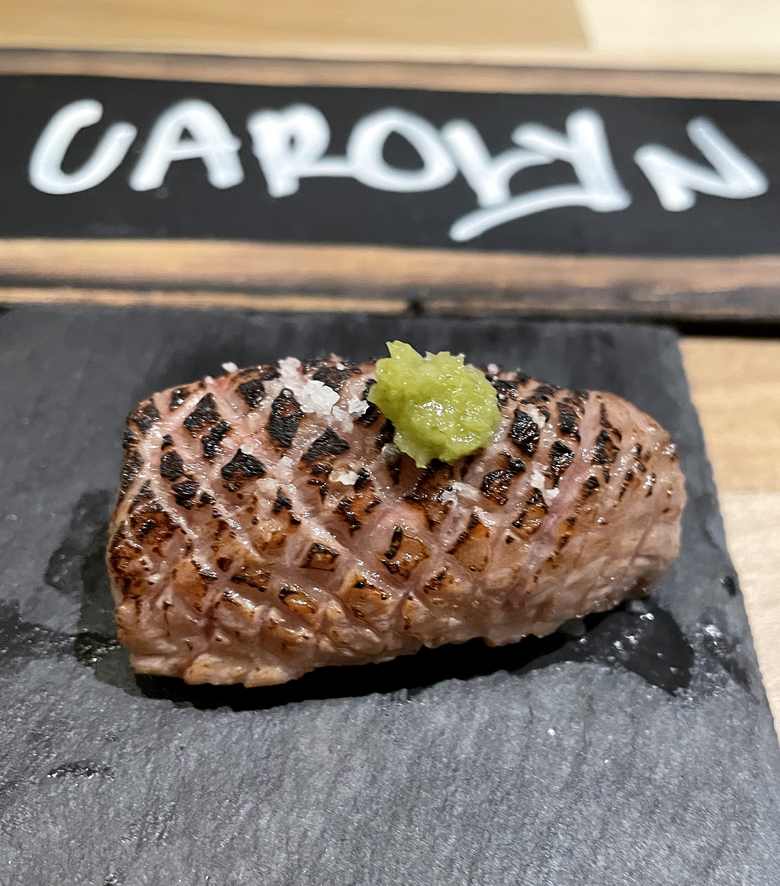
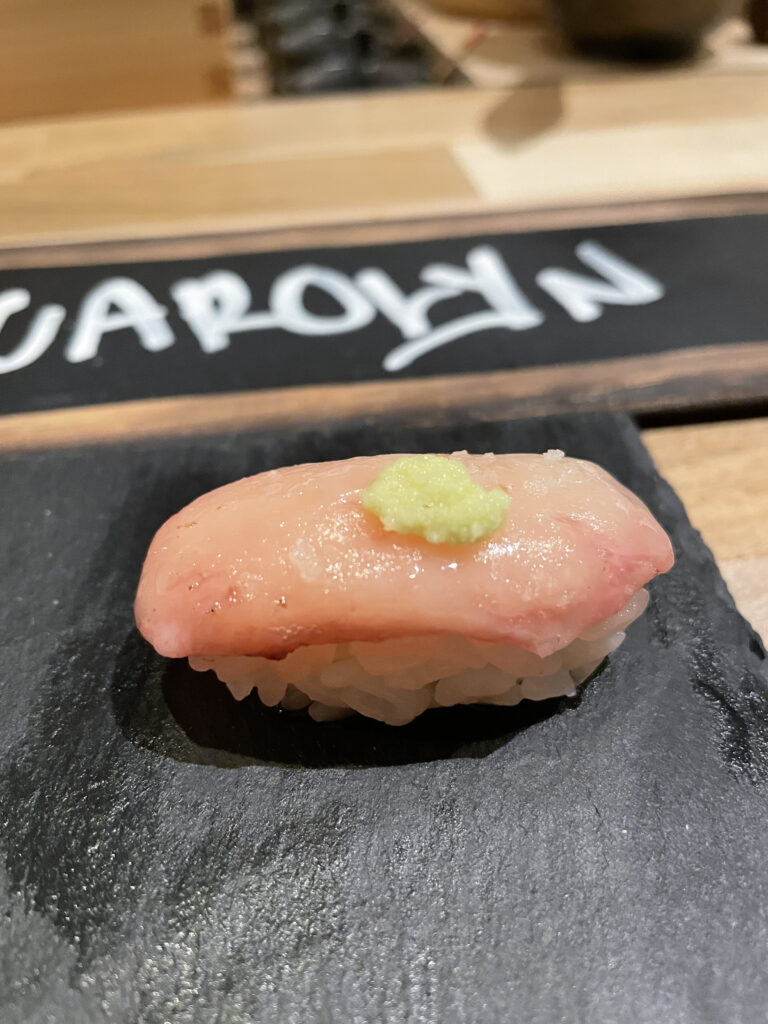
Then, get ready for A5 Wagyu, quickly torched, salted, and dabbed with wasabi for a juicy, meltingly tender, indulgent treat.
That’s followed by bone marrow from that same pampered cow, patted onto a rice ball with soy and wasabi. Think meat butter or even foie gras in the way it really does melt in your mouth and fill every crevice with rich opulence.
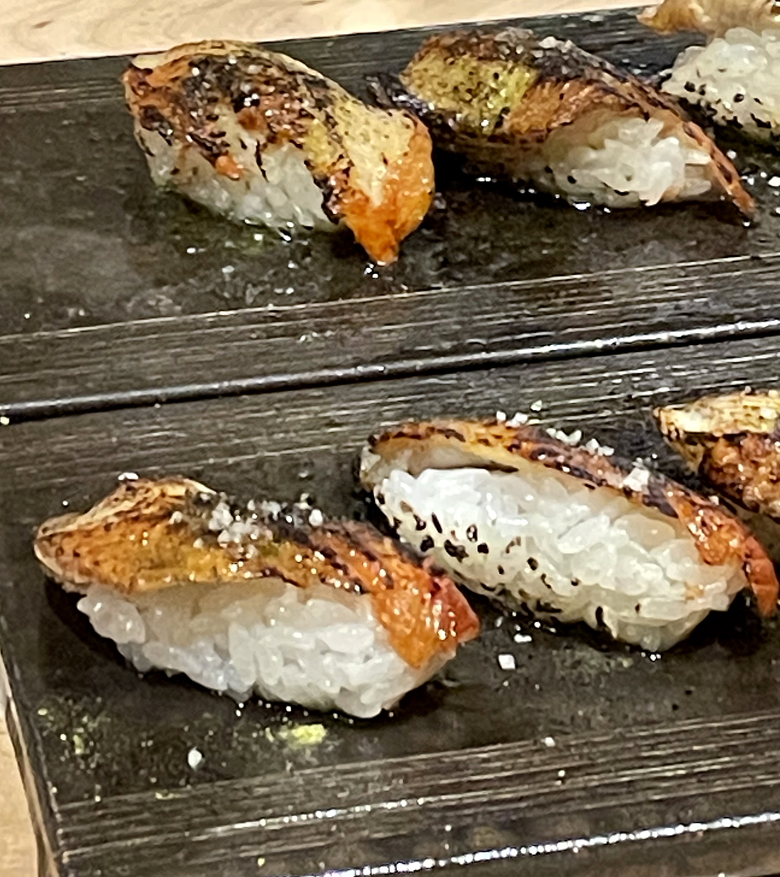
You’re not done with bone marrow just yet. Perez takes a torch to the marrow in the long, split bone and drips it over fresh water eel, that then gets torched again to create crispy edges all over. You’re instructed to eat this one quickly before it cools, so you enjoy the languid, warm marrow glistening and coating everything.
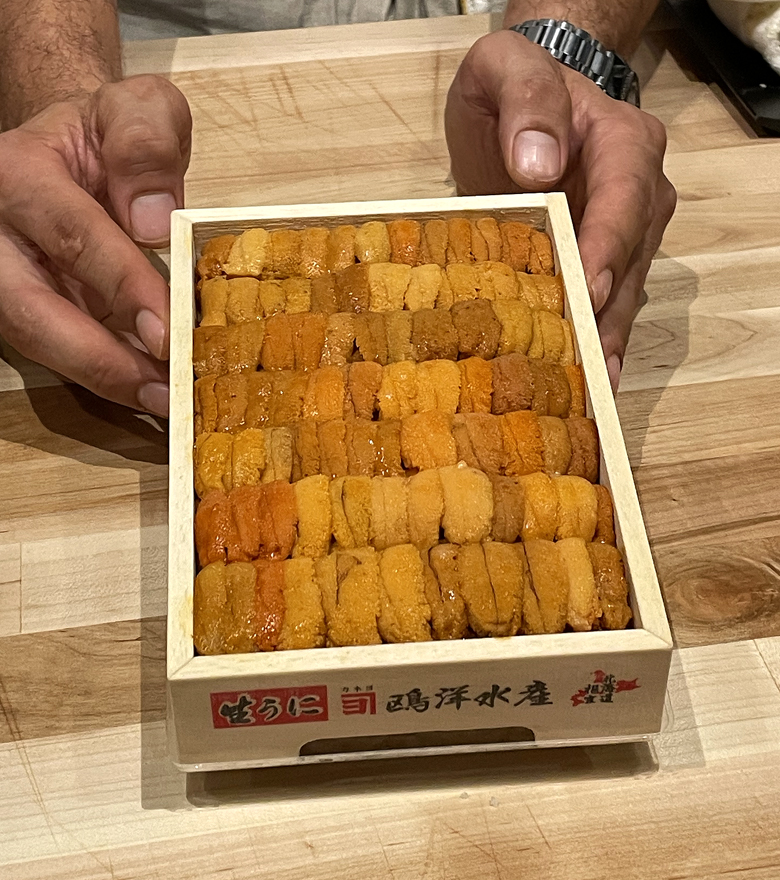
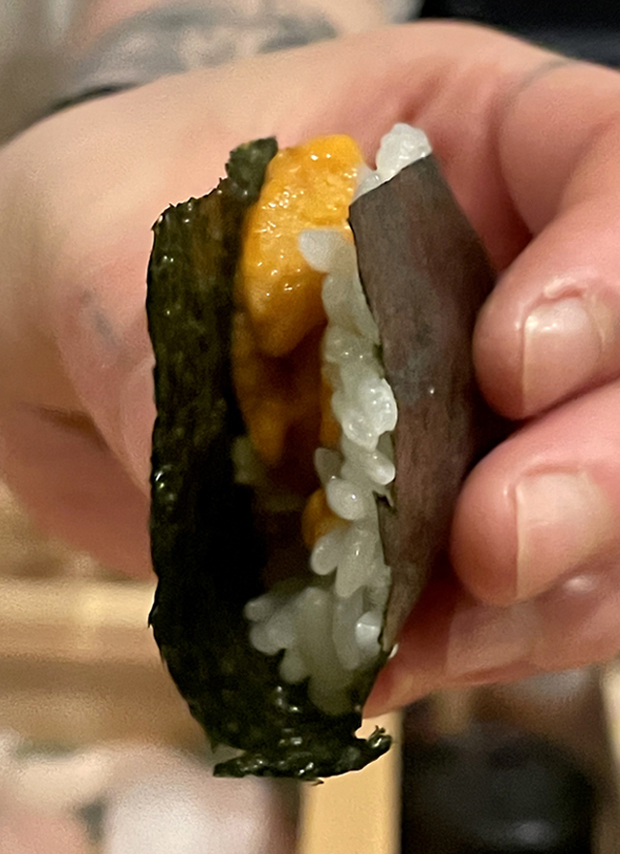
The last official bite is uni from Hokkaido, slipped into a nori “taco” with pearls of rice, wasabi, and salt.
At this point, you’re asked if you’d like an extra bite at an extra cost, a preview of a nigiri for a forthcoming menu. Everyone at our sitting said “yes,” of course. We were presented with black throat sea perch, a fish that’s not easy to catch, which makes it so pricey that 1 pound costs what 3 pounds of otoro would, Perez says.
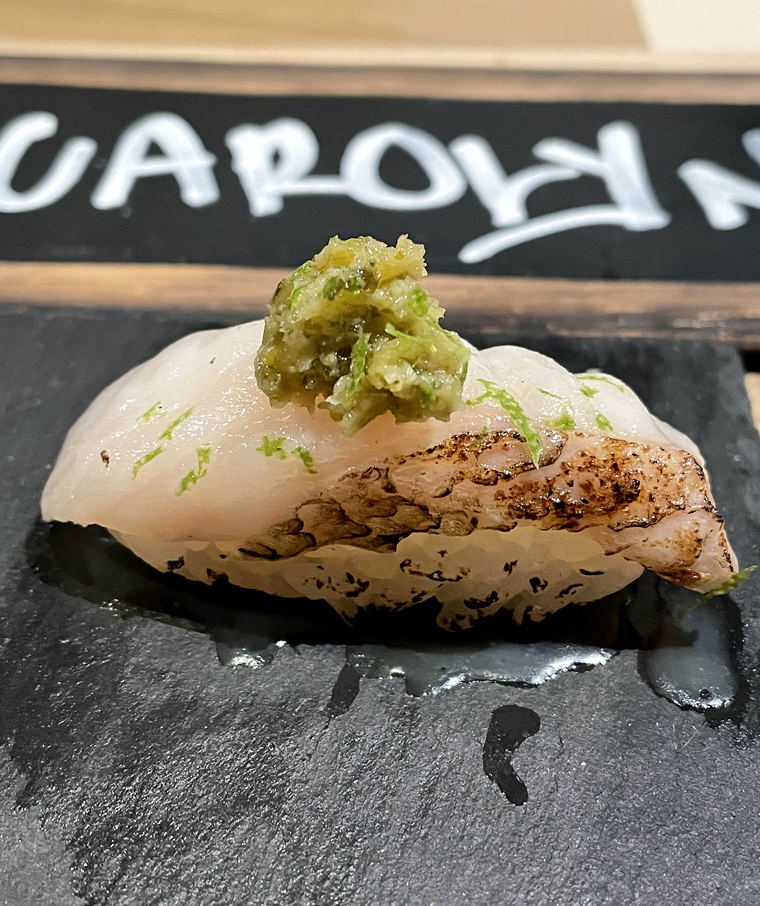
It’s prepared with lime zest and a play on chimichurri made with scallions, garlic, and ginger, which adds a nice herbaceous counterpoint to the fish that’s nearly as fatty as tuna belly.
Dessert is simple — a bon bon cube of makrut lime ice cream on a roasted sesame shortbread that cools and refreshes.

You’re bid adieu, and motioned into a hallway to settle your tab. As the door closes behind, you’re left with the memory of singular sushi and a show found only at this restaurant within a restaurant.
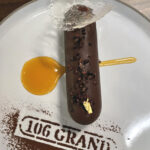
More: Dinner at The Matheson
